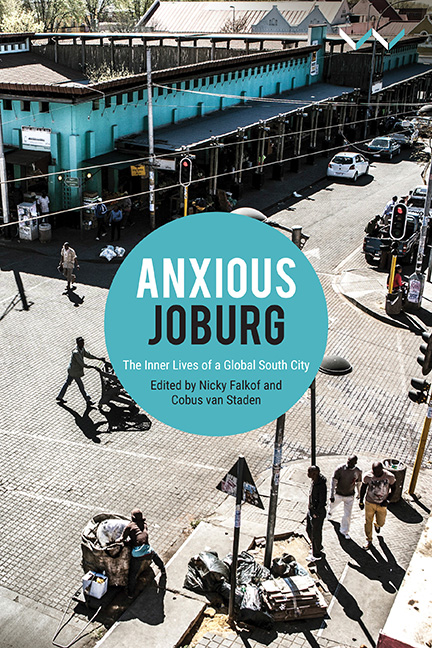Book contents
8 - Shifting Topographies of the Anxious City
Published online by Cambridge University Press: 16 June 2021
Summary
Hillbrow is a residential inner-city neighbourhood to the north of the downtown business district, on the historical border between city and suburbs. In the 1970s it was a playground for chic white urbanites. By the 1980s it had gained a reputation as a hotbed of vice: a ‘grey area’, where the Immorality Act banning interracial sex was no longer enforced, and a site of homosexual and other ‘deviant’ sociality. By the 1990s it housed expanding communities of migrants from elsewhere in South Africa and the continent. In the twenty-first century Hillbrow is vibrant and cosmopolitan but also overpopulated, poorly serviced and dangerous. Home to people from all over Africa, it is, ironically, considered a no-go zone by many locals.
Hillbrow is the locale of two of Johannesburg's most memorable buildings, immortalised in artistic and tourist visual discourse as part of the city's famous skyline. The so-called Hillbrow Tower, on the corner of Goldreich and Banket streets, was built in 1968–71. At a height of 269 m, it is the highest structure in Johannesburg and the tallest tower in Africa. Originally designed for telecommunications and named in honour of apartheid prime minister JG Strijdom, it once housed a revolving restaurant and observation deck. These attractions have been closed to the public since 1981, although the City of Johannesburg has repeatedly discussed plans to renovate and reopen them. Ponte City on Joe Slovo Drive, 173 m and 55 floors high and crowned by a distinctive red band advertising the mobile phone company Vodacom, was built in 1975 as luxury accommodation for the wealthy. It was the first cylindrical skyscraper and is the tallest residential building in Africa. When white and middle-class residents began abandoning the inner city for the malls and gated communities of the northern suburbs, Ponte deteriorated into a site of almost legendary crime and violence. At its worst, in the early 2000s, one entire floor was used as a pimp-controlled brothel and the building's central well piled up with uncollected rubbish to about three floors high. Local legend insists that more than one dead body was left to rot here. In recent years, Ponte has been ‘cleaned up’ by new owners, and now features extremely stringent security and entry conditions.
- Type
- Chapter
- Information
- Anxious JoburgThe Inner Lives of a Global South City, pp. 176 - 181Publisher: Wits University PressPrint publication year: 2020



